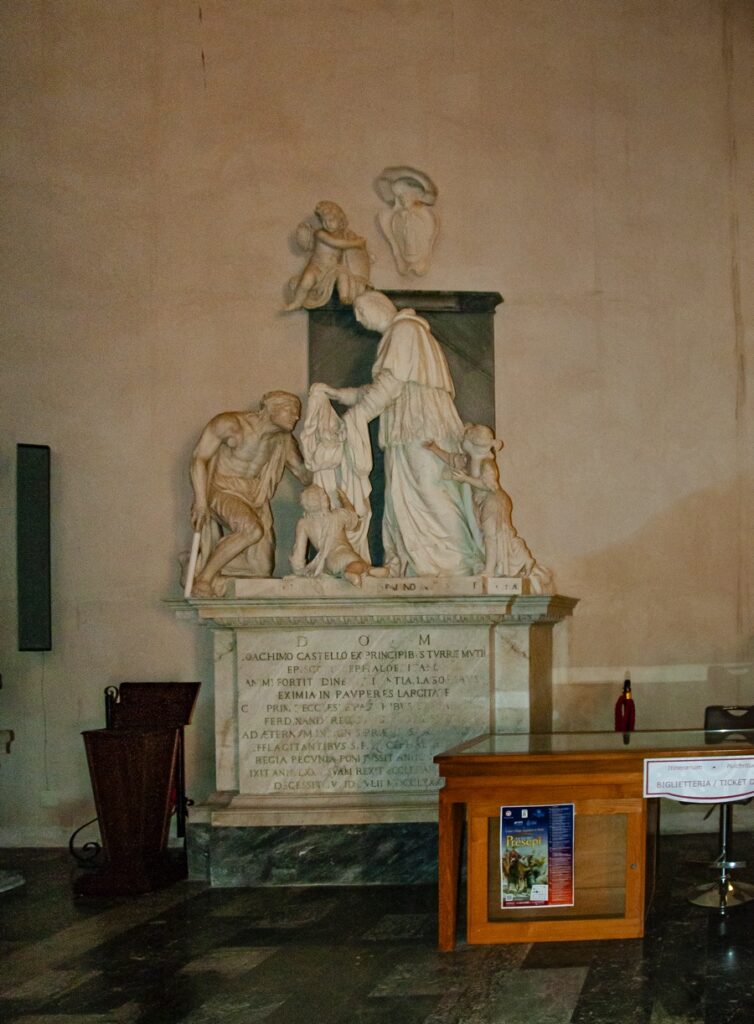The Ventimiglia family owned a family chapel in the Cefalù Cathedral, which is also mentioned in Francis II’s 1386 will. In these documents, Francis II not only instructs his successors on how to maintain the chapel’s jurisdiction, but also orders his heirs to be buried in that sacred place. The chapel, initially dedicated to the Virgin Mary, was then dedicated to Saint Paul in the 16th century. During the Counter-Reformation period, it was dismantled and today the Ventimiglia sarcophagus is located in the southern nave. In the valuable tomb, already used by Francis’ ancestors, therefore traceable to a more ancient period, the decorations with the powerful family’s coat of arms can be seen. Another important funerary monument is that of Bishop Gioacchino Castelli, who ruled the diocese from 1755 to 1788, the year of his death.
The marble monument, sculpted by the artist Leonardo Pennino in 1790, depicts the bishop giving his robes to a beggar.